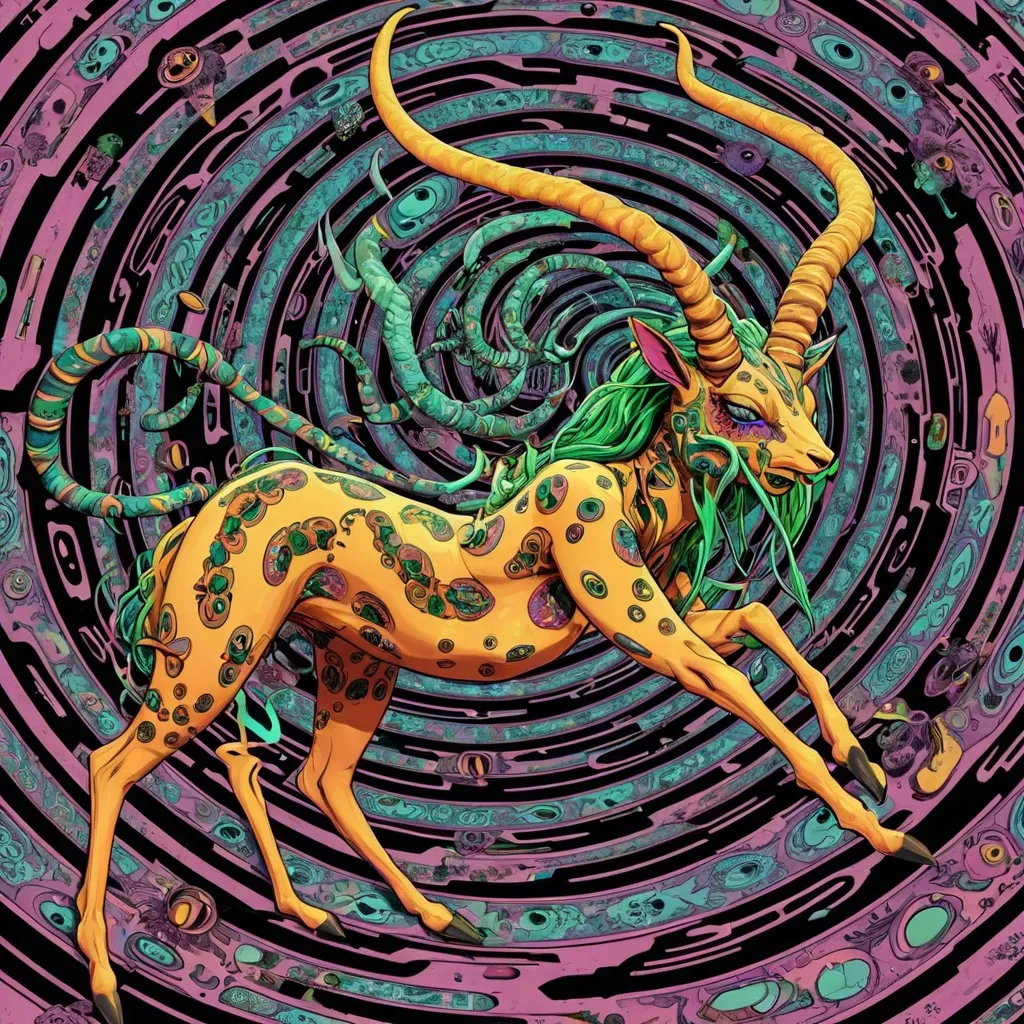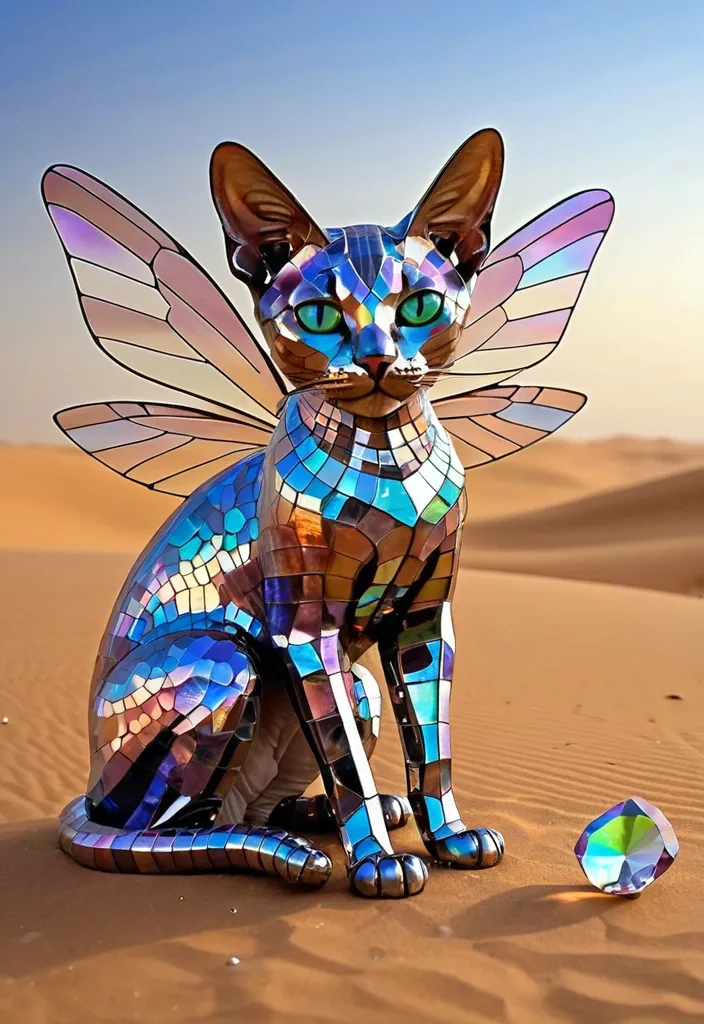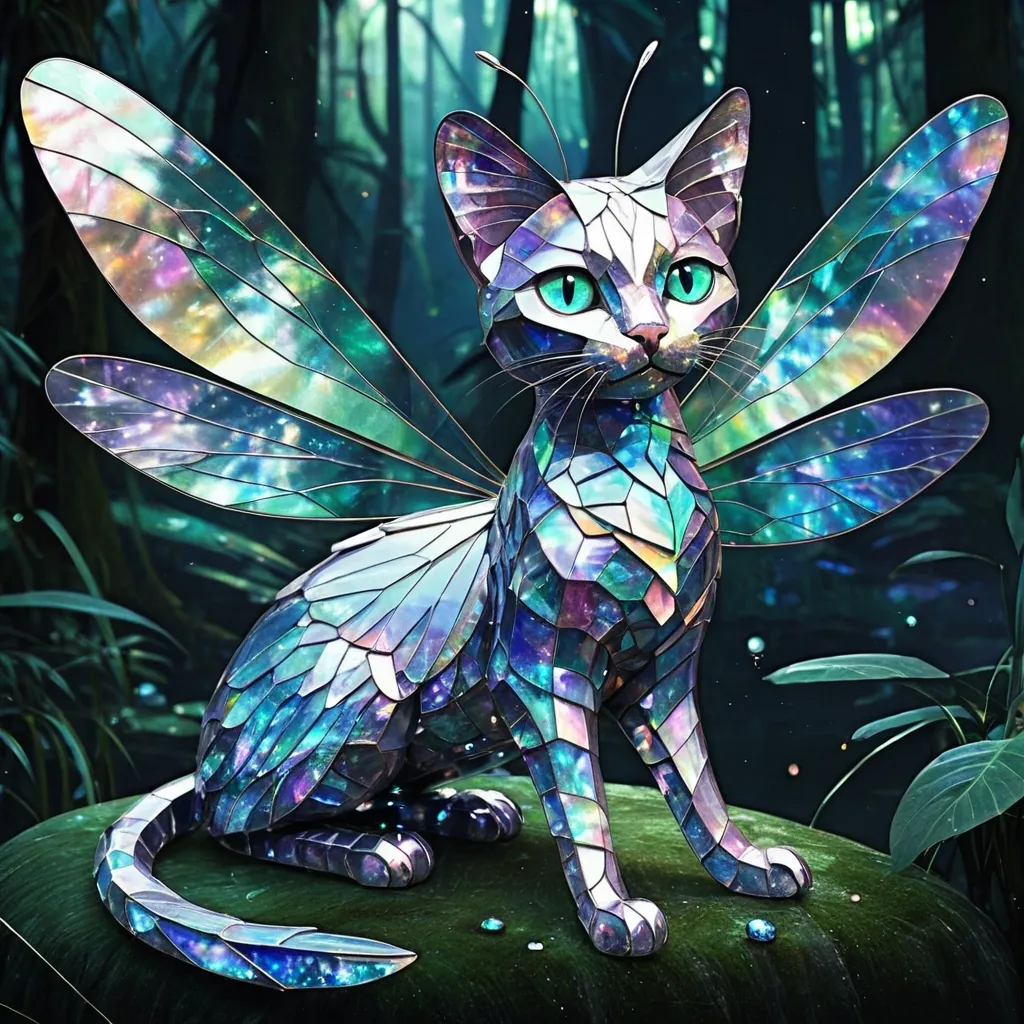Search Results for hybrid
Explore AI generated designs, images, art and prompts by top community artists and designers.

A sleek , white hybrid hovercraft uniquely "O" shaped in flying adventure over of the sand-choked desert , its large transparent cabin revealing passengers , metallic orange shell , many lights , line air. The small propellers exuding hybrid hovercraft in air , forged from deep white steel with a shimmering , liquid-like surface , the scene bathed in soft , diffused night light. ,

A highly Fantasio the Wonder samurai warrior with a massive glowing sword , its rules pulsing with light , halfrhino hybrid warrior , with an oversized Antler , expressive facial features , and playful exaggeration. Rendered in a smooth , polished style with clean materials and soft ambient lighting. Minimal background to emphasize the character’s charm and presence. ,
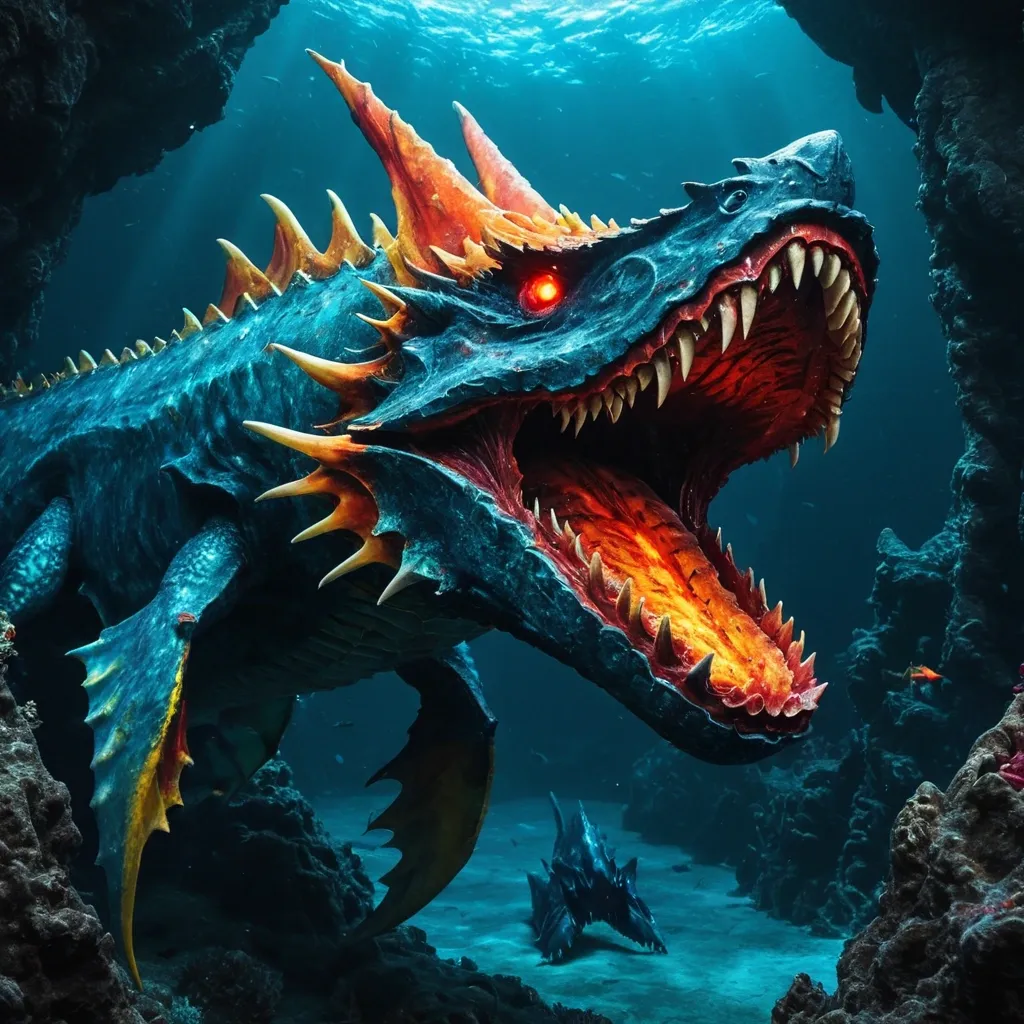
Make an underwater hybrid picture of a megalodon and a dragon. The creature should have the head of a dragon , like in Game of Thrones. The wings are huge and look like glowing lava , colors red , orange , and yellow. The hybrid's body is covered in teal , sky blue , royal blue , and indigo blue scales. The tail has a jagged fin. The back fin is scarred. The dragon's face has high cheekbones bony and big red eyes.. The background is a dark deep sea trench , with an underwater cave entrance and sharks swimming. The creature has its jaws open , with 3 rows of sharp teeth. ,

Make an underwater hybrid picture of a mermaid and a dragon. The creature should have the head of a dragon , like in Game of Thrones. The wings are huge and look like glowing lava , colors red , orange , and yellow. The hybrid's body is covered in teal , sky blue , royal blue , and indigo blue scales. The tail has a jagged fin. The dragon's face has high cheekbones bony and big red eyes. The hair has long , dark pink dreadlocks , and has seaweed and kelp entangled in it. The background has an underwater cave entrance and sharks swimming. The creature has a glowing green aura around it. ,

Make an underwater hybrid picture of a mermaid and a dragon. The creature should have the head of a dragon. The wings are huge and look like glowing lava , colors red , orange , and yellow. The hybrid's body is covered in teal , sky blue , royal blue , and indigo blue scales. The tail has a jagged fin. The mermaid's dragon face is bony and scaly. The hair is long , dark gray , and has seaweed and kelp entangled in it. The background has an underwater cave entrance. ,
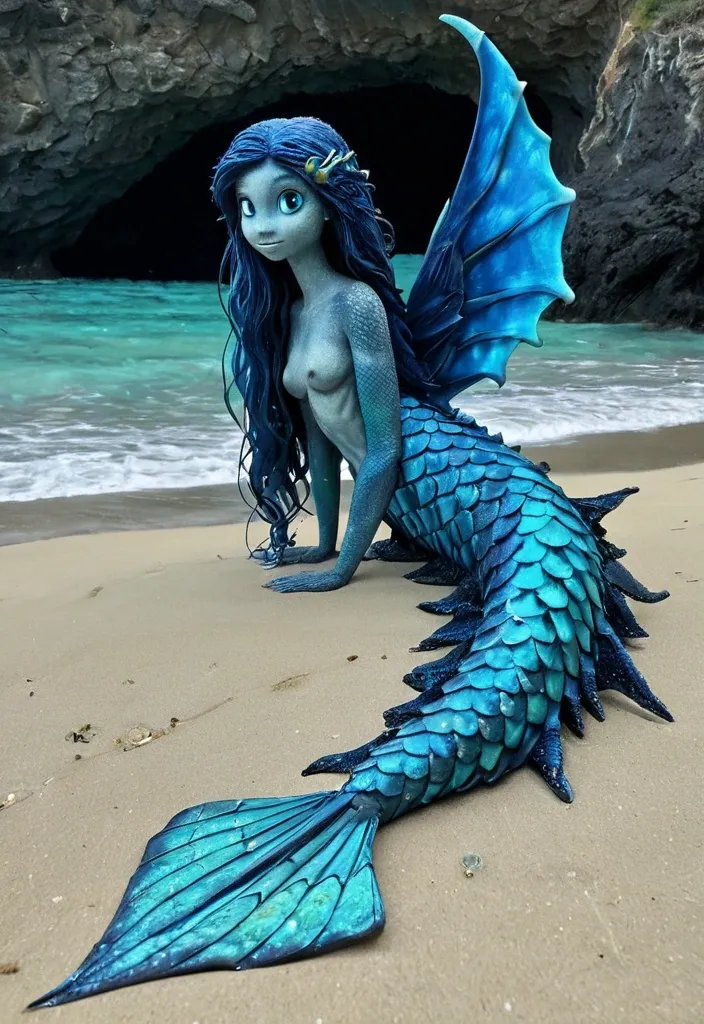
Make a hybrid picture of a mermaid and a dragon. The wings are huge and look like glowing lava. The hybrid's body is covered in teal , sky blue , royal blue , and indigo blue scales. The tail has a forked fin. The mermaid's face is bony and scaly. The hair is long , dark gray , and has seaweed and kelp entangled in it. The background has sea bottom , sand , and an underwater cave entrance. ,

A realistic scene where a person rides a high-tech robotic Spider with four mechanical legs climb on rock-mountain , enthusiastically waving their hand to amazed onlookers with remote. The rider sits on an impressive green , yellow and black mechanical walker-Spider hybrid with industrial metallic details and "SpaceX" branding. Crowds of Nepali people line the at mountains-way , pointing and staring in wonder and surprise at this extraordinary sight. The atmosphere is dynamic and energetic , with the mechanical legs creating a bouncing , galloping motion as it moves through an mountain environment. Cinematic composition with layered depth showing the contrast between cutting-edge robotics technology and everyday street life , captured from a dynamic angle that emphasizes the spectacle and people's amazed reactions. ,

A futuristic scene where a person rides a high-tech robotic Crab with four mechanical legs climb on rock-mountain , control by remote , enthusiastically waving their hand to amazed onlookers. The rider sits on an impressive red , yellow and black mechanical walker-Crab hybrid with industrial metallic details and "SpaceX" branding. Crowds of Indian people line the at mountains-way , pointing and staring in wonder and surprise at this extraordinary sight. The atmosphere is dynamic and energetic , with the mechanical legs creating a bouncing , galloping motion as it moves through an mountain environment. Cinematic composition with layered depth showing the contrast between cutting-edge robotics technology and everyday street life , captured from a dynamic angle that emphasizes the spectacle and people's amazed reactions. ,

Sky Terror , hybrid dinosaur-bird creature , crow-sized raptor , massive hooked beak with razor-sharp edges and rows of small serrated backward-curving teeth like miniature shark teeth , terror bird crushing power in compact form , Archaeopteryx-style feathered wings with three prominent curved black talons extending from wing joints , claws gleaming like obsidian blades , wing membranes showing both primitive and modern feather structure , powerful muscular legs like secretarybird , sleek aerodynamic build , prehistoric feather patterns , predatory amber eyes , perched on rocky outcrop , dramatic lighting , photorealistic , detailed feather textures , 8K resolution ,
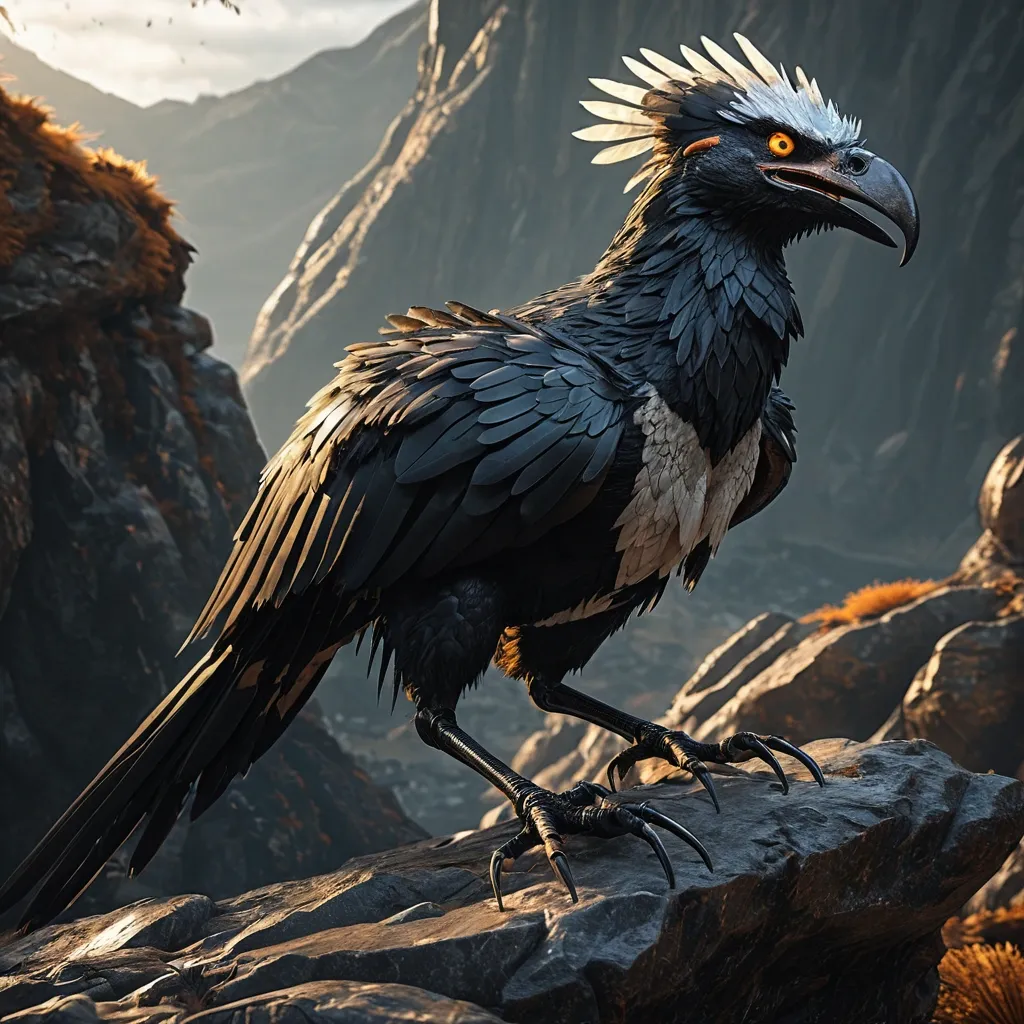
Sky Terror , hybrid dinosaur-bird creature , crow-sized raptor , razor-sharp hooked beak with small backward-curving teeth , Archaeopteryx-style feathered wings with visible claws , powerful muscular legs like secretarybird , sleek aerodynamic build , prehistoric feather patterns , predatory amber eyes , perched on rocky outcrop , dramatic lighting , photorealistic , detailed feather textures , 8K resolution ,

close-up surreal high-fashion portrait :: elegant deer-human hybrid face – elongated and stylized with graceful symmetry :: humanized facial structure – soft forehead , high cheekbones , delicate lips , subtly blended short deer snout :: soulful amber-brown eyes with human focus and emotional intensity :: fine golden-brown fur , blending naturally into human skin textures :: soft pores , slight imperfections , glowing surface detail :: translucent green silk headscarf (in sage or moss green) flows around the head and neck in airy , dynamic folds – light catching and swirling in elegant curves :: headscarf gently wraps around the elongated face and long swan-like neck :: cinematic background in medium brown tones – soft taupe to warm coffee gradient , slightly darker for mood and visual depth :: shallow depth of field , film grain , RGB fringe on edges , slight lens distortions :: moody editorial lighting with light fall-off and atmospheric haze :: macro lens clarity on textures , eye catchlights , gentle shadows :: inspired by Ernst Fuchs surrealism and high-end fashion photography – ethereal , emotionally quiet , refined , hyperreal and elegant ,

close-up surreal high-fashion portrait :: elegant deer-human hybrid face – elongated and stylized with graceful symmetry :: humanized facial structure – soft forehead , high cheekbones , delicate lips , subtly blended short deer snout :: soulful amber-brown eyes with human focus and emotional intensity :: fine golden-brown fur , blending naturally into human skin textures :: soft pores , slight imperfections , glowing surface detail :: translucent green silk headscarf (in sage or moss green) flows around the head and neck in airy , dynamic folds – light catching and swirling in elegant curves :: headscarf gently wraps around the elongated face and long swan-like neck :: cinematic background in medium brown tones – soft taupe to warm coffee gradient , slightly darker for mood and visual depth :: shallow depth of field , film grain , RGB fringe on edges , slight lens distortions :: moody editorial lighting with light fall-off and atmospheric haze :: macro lens clarity on textures , eye catchlights , gentle shadows :: inspired by Ernst Fuchs surrealism and high-end fashion photography – ethereal , emotionally quiet , refined , hyperreal and elegant ,

A majestic and mysterious hybrid creature , a fusion of a massive tiger and a dragon , perched on a rugged cliff at dusk. The creature's body is covered in striped fur , transitioning into smoky , ethereal feathers along its back and wings. Its eyes glow with a molten red intensity , and its claws are adorned with intricate scales. The rocky ledge is shrouded in mist , with embers floating in the air , adding an eerie glow to the scene. The hyperrealistic style captures every detail , from the texture of the fur and feathers to the ruggedness of the cliff. Cinematic lighting enhances the dramatic atmosphere , casting long shadows and highlighting the creature's powerful presence. The background features a vast , misty landscape , with the fading light of dusk creating a sense of mystery and awe. ,
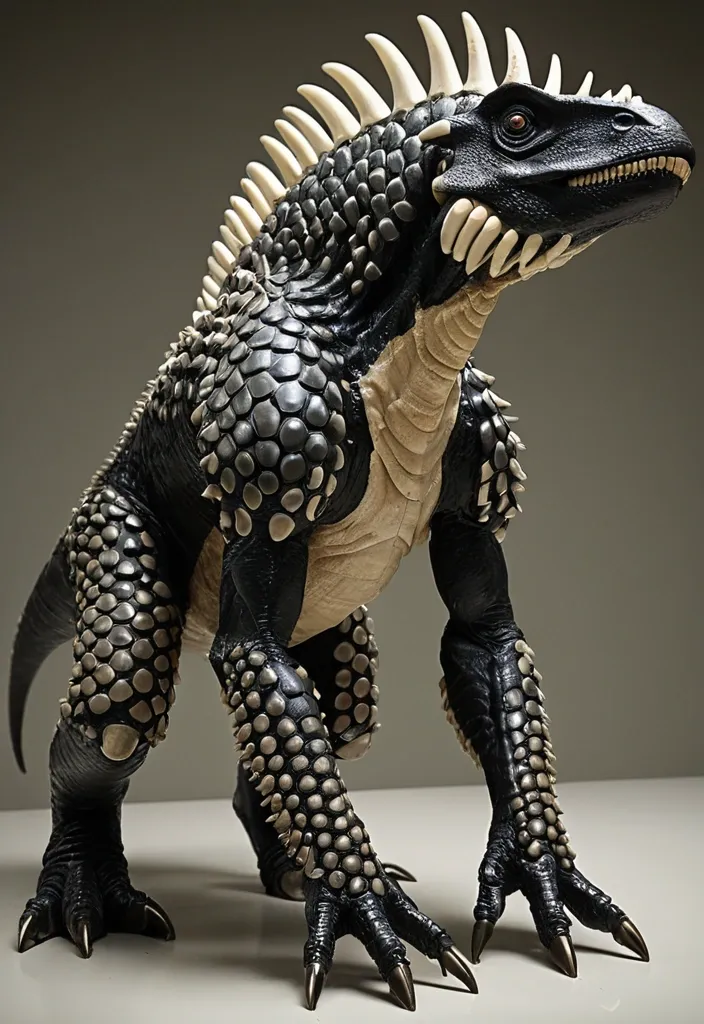
Physical Characteristics: Venenosus Regina is a titanic hybrid dinosaur standing approximately 20 feet tall at the shoulders and stretching 40 feet in length. Its frame is a powerful fusion of Tyrannosaurus rex and Giganotosaurus bulk , with a head shape that blends the robust cranial features of Giganotosaurus and the bony crown of Triceratops. The jawline is adorned with formidable bony spikes on each side , reminiscent of Triceratops horns , enhancing both offense and defense. Its body is armored with large , jet-black , glossy keratin scales inherited from Giant Pangolin DNA , interspersed with cream-colored underbelly patches. These scales are embedded with chromatophore cells from cuttlefish DNA , allowing Venenosus Regina to rapidly alter its skin color , texture , and pattern for camouflage or intimidation. The overall silhouette is muscular , lean and agile , with reduced hind legs that enable knuckle-walking , a trait borrowed from chimpanzee DNA , granting it a unique locomotion style that balances speed and stability.The forelimbs are robust and highly dexterous , equipped with slashing hook claws inspired by Saurophaganax and chimpanzee genetics , capable of delivering devastating swipes and manipulating tools or prey with precision. ,

Physical Characteristics: Venenosus Regina is a titanic hybrid dinosaur standing approximately 20 feet tall at the shoulders and stretching 40 feet in length. Its frame is a powerful fusion of Tyrannosaurus rex and Giganotosaurus bulk , with a head shape that blends the robust cranial features of Giganotosaurus and the bony crown of Triceratops. The jawline is adorned with formidable bony spikes on each side , reminiscent of Triceratops horns , enhancing both offense and defense. Its body is armored with large , jet-black , glossy keratin scales inherited from Giant Pangolin DNA , interspersed with cream-colored underbelly patches. These scales are embedded with chromatophore cells from cuttlefish DNA , allowing Venenosus Regina to rapidly alter its skin color , texture , and pattern for camouflage or intimidation. The overall silhouette is muscular , lean and agile , with reduced hind legs that enable knuckle-walking , a trait borrowed from chimpanzee DNA , granting it a unique locomotion style that balances speed and stability.The forelimbs are robust and highly dexterous , equipped with slashing hook claws inspired by Saurophaganax and chimpanzee genetics , capable of delivering devastating swipes and manipulating tools or prey with precision. ,
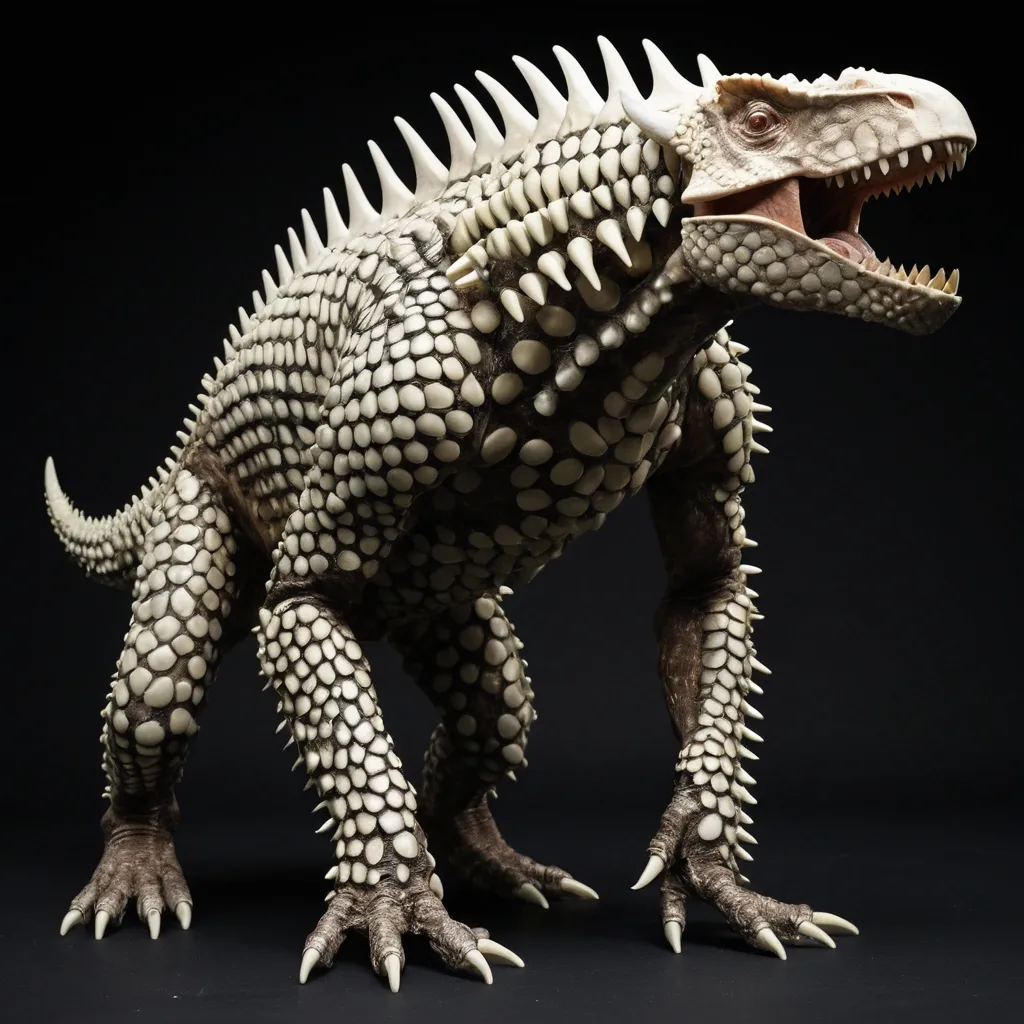
Physical Characteristics: Venenosus Regina is a titanic hybrid dinosaur standing approximately 20 feet tall at the shoulders and stretching 40 feet in length. Its frame is a powerful fusion of Tyrannosaurus rex and Giganotosaurus bulk , with a head shape that blends the robust cranial features of Giganotosaurus and the bony crown of Triceratops. The jawline is adorned with formidable bony spikes on each side , reminiscent of Triceratops horns , enhancing both offense and defense. Its body is armored with large , jet-black , glossy keratin scales inherited from Giant Pangolin DNA , interspersed with cream-colored underbelly patches. These scales are embedded with chromatophore cells from cuttlefish DNA , allowing Venenosus Regina to rapidly alter its skin color , texture , and pattern for camouflage or intimidation. The overall silhouette is muscular , lean and agile , with reduced hind legs that enable knuckle-walking , a trait borrowed from chimpanzee DNA , granting it a unique locomotion style that balances speed and stability.The forelimbs are robust and highly dexterous , equipped with slashing hook claws inspired by Saurophaganax and chimpanzee genetics , capable of delivering devastating swipes and manipulating tools or prey with precision. ,
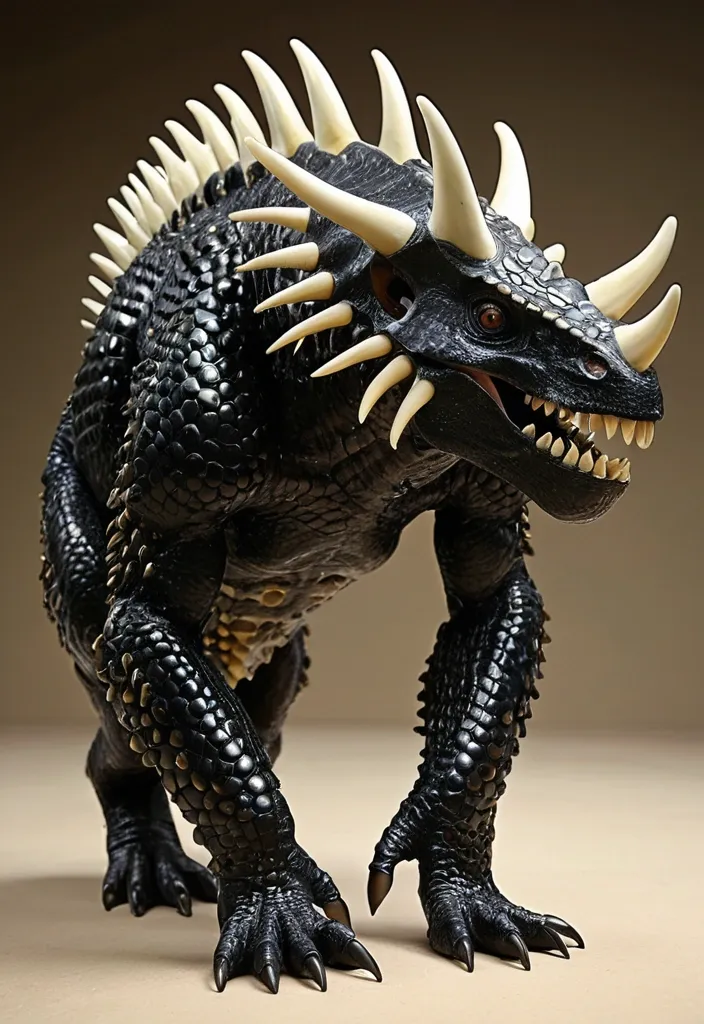
Physical Characteristics: Venenosus Regina is a titanic hybrid dinosaur standing approximately 20 feet tall at the shoulders and stretching 40 feet in length. Its frame is a powerful fusion of Tyrannosaurus rex and Giganotosaurus bulk , with a head shape that blends the robust cranial features of Giganotosaurus and the bony crown of Triceratops. The jawline is adorned with formidable bony spikes on each side , reminiscent of Triceratops horns , enhancing both offense and defense. Its body is armored with large , jet-black , glossy keratin scales inherited from Giant Pangolin DNA , interspersed with cream-colored underbelly patches. These scales are embedded with chromatophore cells from cuttlefish DNA , allowing Venenosus Regina to rapidly alter its skin color , texture , and pattern for camouflage or intimidation. The overall silhouette is muscular , lean and agile , with reduced hind legs that enable knuckle-walking , a trait borrowed from chimpanzee DNA , granting it a unique locomotion style that balances speed and stability.The forelimbs are robust and highly dexterous , equipped with slashing hook claws inspired by Saurophaganax and chimpanzee genetics , capable of delivering devastating swipes and manipulating tools or prey with precision. ,
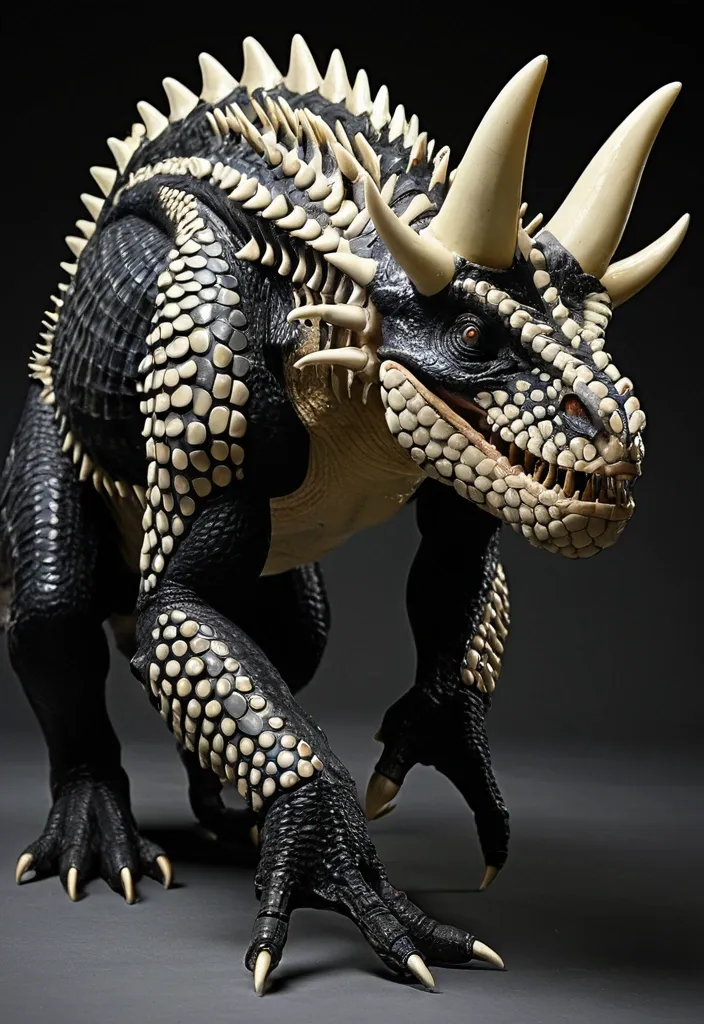
Physical Characteristics: Venenosus Regina is a titanic hybrid dinosaur standing approximately 20 feet tall at the shoulders and stretching 40 feet in length. Its frame is a powerful fusion of Tyrannosaurus rex and Giganotosaurus bulk , with a head shape that blends the robust cranial features of Giganotosaurus and the bony crown of Triceratops. The jawline is adorned with formidable bony spikes on each side , reminiscent of Triceratops horns , enhancing both offense and defense. Its body is armored with large , jet-black , glossy keratin scales inherited from Giant Pangolin DNA , interspersed with cream-colored underbelly patches. These scales are embedded with chromatophore cells from cuttlefish DNA , allowing Venenosus Regina to rapidly alter its skin color , texture , and pattern for camouflage or intimidation. The overall silhouette is muscular , lean and agile , with reduced hind legs that enable knuckle-walking , a trait borrowed from chimpanzee DNA , granting it a unique locomotion style that balances speed and stability.The forelimbs are robust and highly dexterous , equipped with slashing hook claws inspired by Saurophaganax and chimpanzee genetics , capable of delivering devastating swipes and manipulating tools or prey with precision. ,
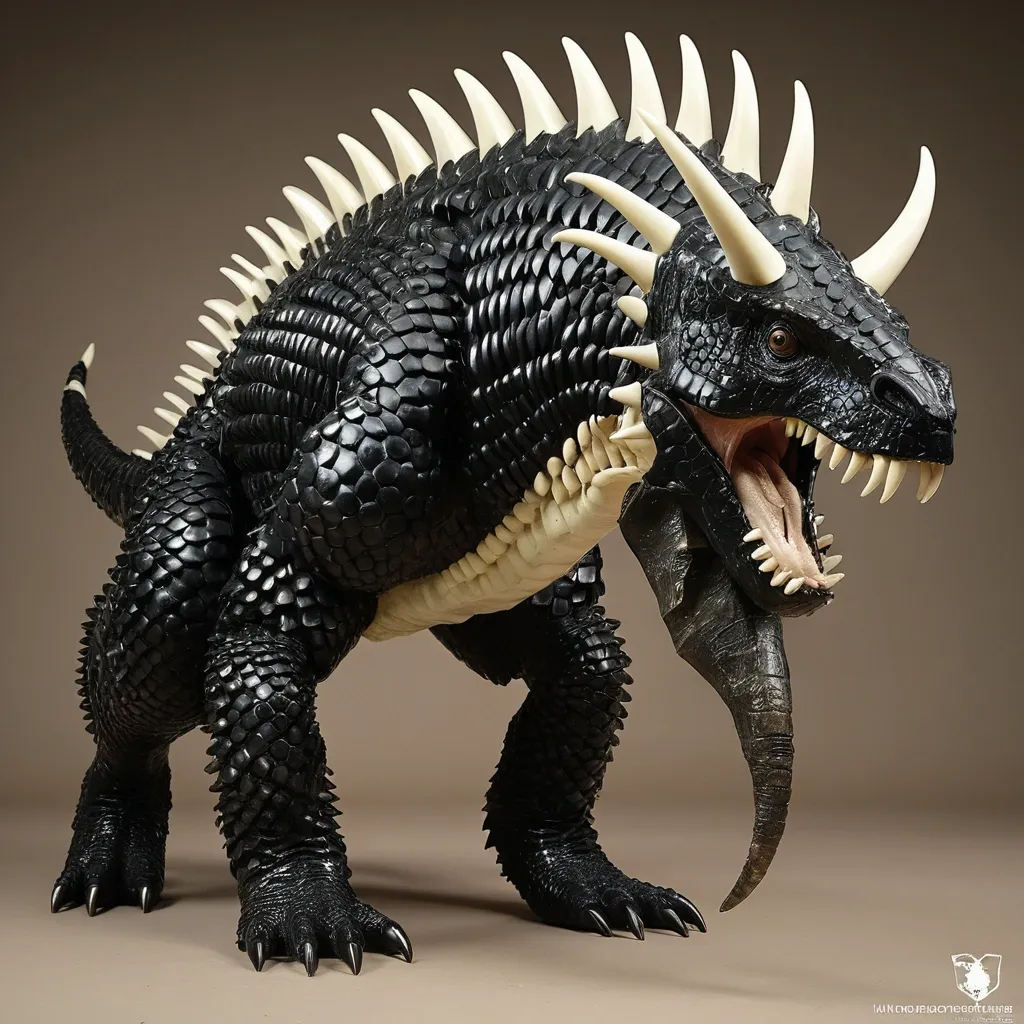
Physical Characteristics: Venenosus Regina is a titanic hybrid dinosaur standing approximately 20 feet tall at the shoulders and stretching 40 feet in length. Its frame is a powerful fusion of Tyrannosaurus rex and Giganotosaurus bulk , with a head shape that blends the robust cranial features of Giganotosaurus and the bony crown of Triceratops. The jawline is adorned with formidable bony spikes on each side , reminiscent of Triceratops horns , enhancing both offense and defense. Its body is armored with large , jet-black , glossy keratin scales inherited from Giant Pangolin DNA , interspersed with cream-colored underbelly patches. These scales are embedded with chromatophore cells from cuttlefish DNA , allowing Venenosus Regina to rapidly alter its skin color , texture , and pattern for camouflage or intimidation. The overall silhouette is muscular , lean and agile , with reduced hind legs that enable knuckle-walking , a trait borrowed from chimpanzee DNA , granting it a unique locomotion style that balances speed and stability.The forelimbs are robust and highly dexterous , equipped with slashing hook claws inspired by Saurophaganax and chimpanzee genetics , capable of delivering devastating swipes and manipulating tools or prey with precision. ,
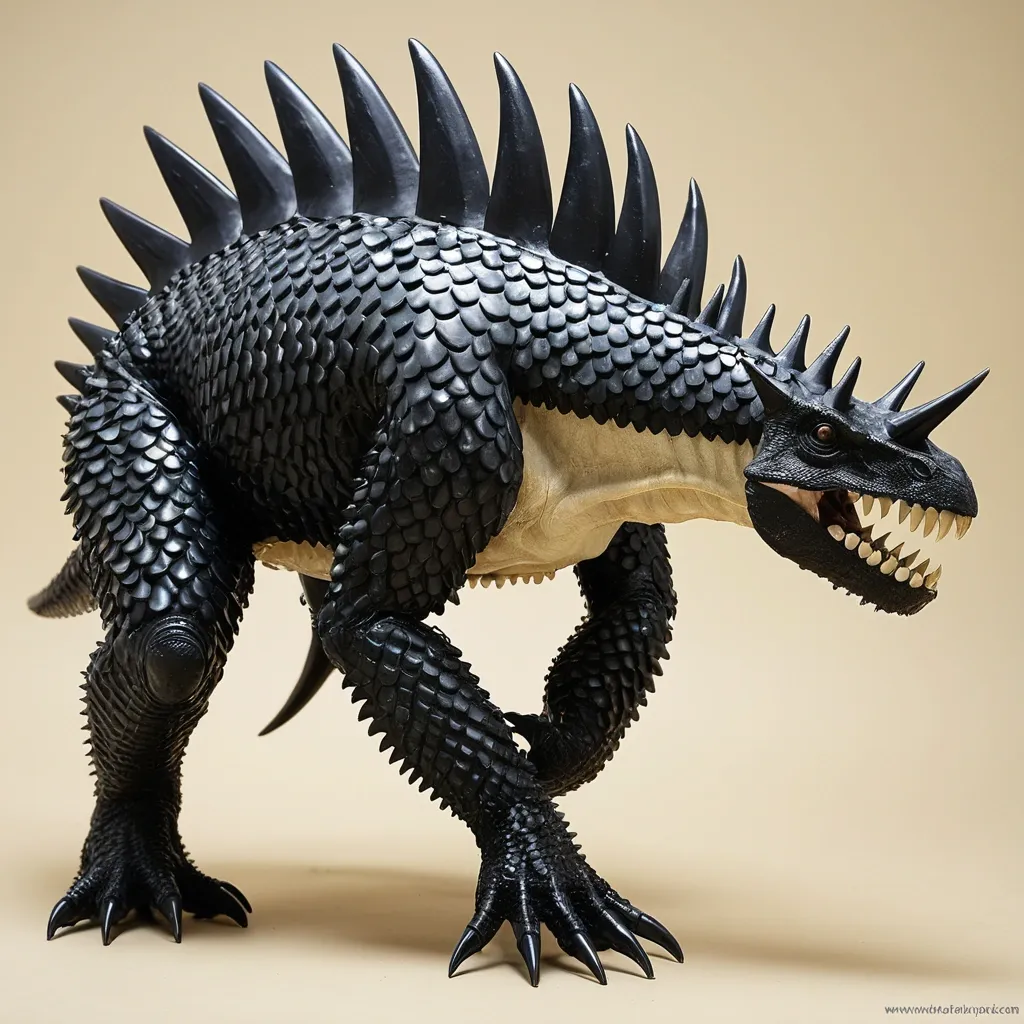
Physical Characteristics: Venenosus Regina is a titanic hybrid dinosaur standing approximately 20 feet tall at the shoulders and stretching 40 feet in length. Its frame is a powerful fusion of Tyrannosaurus rex and Giganotosaurus bulk , with a head shape that blends the robust cranial features of Giganotosaurus and the bony crown of Triceratops. The jawline is adorned with formidable bony spikes on each side , reminiscent of Triceratops horns , enhancing both offense and defense. Its body is armored with large , jet-black , glossy keratin scales inherited from Giant Pangolin DNA , interspersed with cream-colored underbelly patches. These scales are embedded with chromatophore cells from cuttlefish DNA , allowing Venenosus Regina to rapidly alter its skin color , texture , and pattern for camouflage or intimidation. The overall silhouette is muscular , lean and agile , with reduced hind legs that enable knuckle-walking , a trait borrowed from chimpanzee DNA , granting it a unique locomotion style that balances speed and stability.The forelimbs are robust and highly dexterous , equipped with slashing hook claws inspired by Saurophaganax and chimpanzee genetics , capable of delivering devastating swipes and manipulating tools or prey with precision. ,
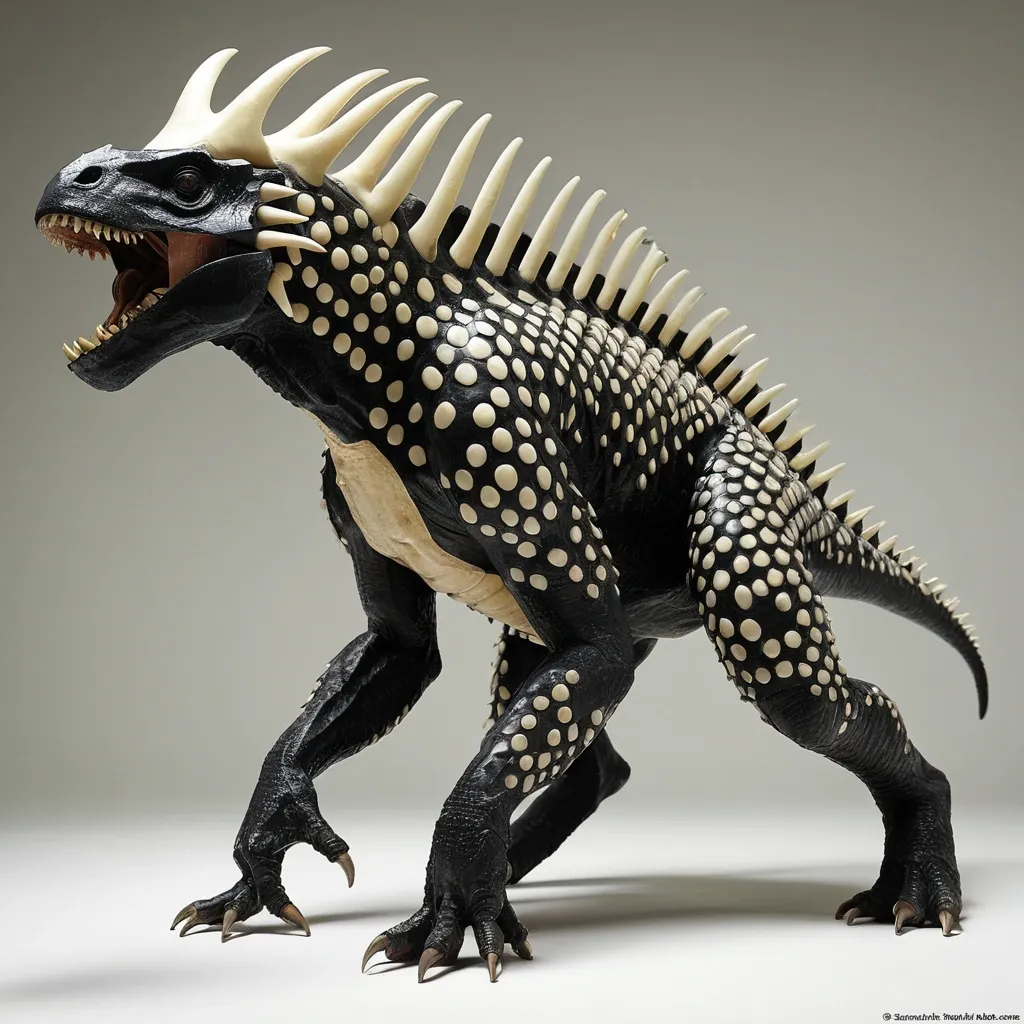
Physical Characteristics: Venenosus Regina is a titanic hybrid dinosaur standing approximately 20 feet tall at the shoulders and stretching 40 feet in length. Its frame is a powerful fusion of Tyrannosaurus rex and Giganotosaurus bulk , with a head shape that blends the robust cranial features of Giganotosaurus and the bony crown of Triceratops. The jawline is adorned with formidable bony spikes on each side , reminiscent of Triceratops horns , enhancing both offense and defense. Its body is armored with large , jet-black , glossy keratin scales inherited from Giant Pangolin DNA , interspersed with cream-colored underbelly patches. These scales are embedded with chromatophore cells from cuttlefish DNA , allowing Venenosus Regina to rapidly alter its skin color , texture , and pattern for camouflage or intimidation. The overall silhouette is muscular , lean and agile , with reduced hind legs that enable knuckle-walking , a trait borrowed from chimpanzee DNA , granting it a unique locomotion style that balances speed and stability.The forelimbs are robust and highly dexterous , equipped with slashing hook claws inspired by Saurophaganax and chimpanzee genetics , capable of delivering devastating swipes and manipulating tools or prey with precision. ,
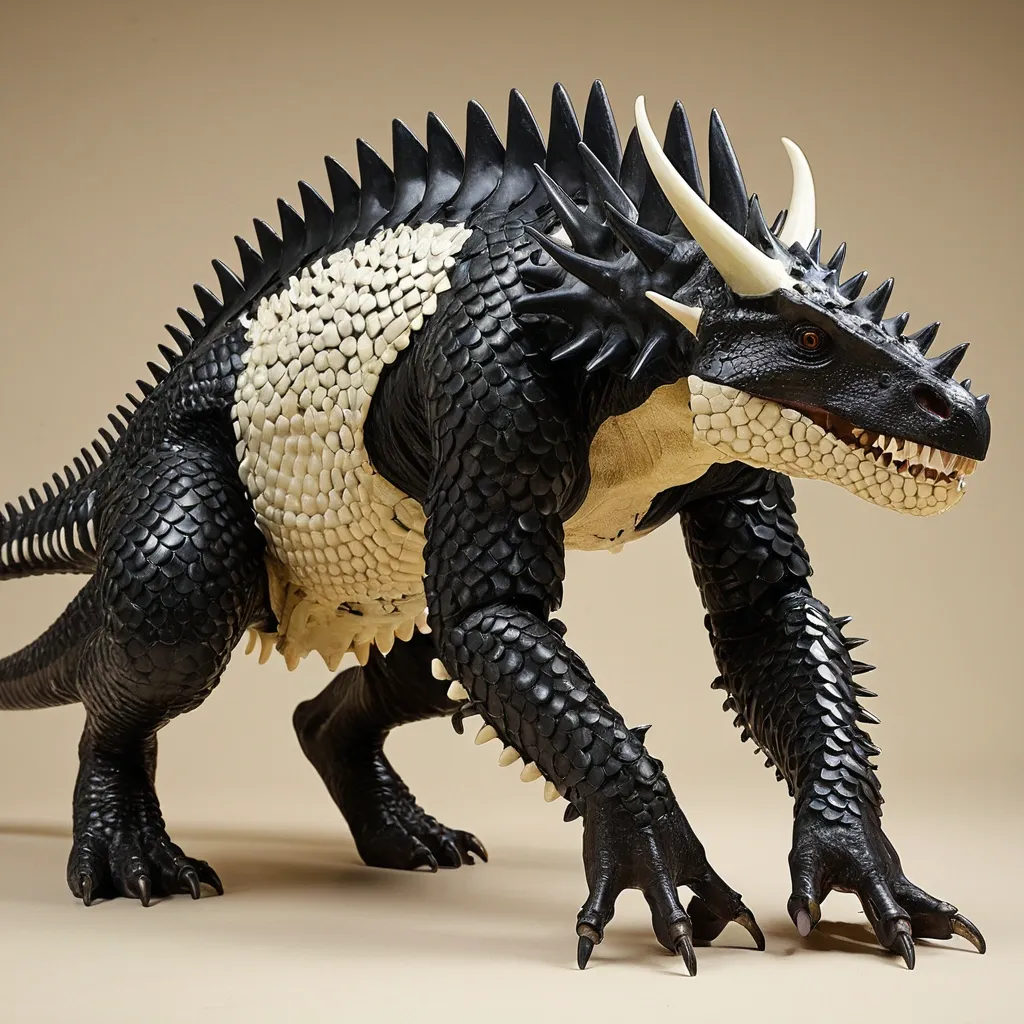
Physical Characteristics: Venenosus Regina is a titanic hybrid dinosaur standing approximately 20 feet tall at the shoulders and stretching 40 feet in length. Its frame is a powerful fusion of Tyrannosaurus rex and Giganotosaurus bulk , with a head shape that blends the robust cranial features of Giganotosaurus and the bony crown of Triceratops. The jawline is adorned with formidable bony spikes on each side , reminiscent of Triceratops horns , enhancing both offense and defense. Its body is armored with large , jet-black , glossy keratin scales inherited from Giant Pangolin DNA , interspersed with cream-colored underbelly patches. These scales are embedded with chromatophore cells from cuttlefish DNA , allowing Venenosus Regina to rapidly alter its skin color , texture , and pattern for camouflage or intimidation. The overall silhouette is muscular , lean and agile , with reduced hind legs that enable knuckle-walking , a trait borrowed from chimpanzee DNA , granting it a unique locomotion style that balances speed and stability.The forelimbs are robust and highly dexterous , equipped with slashing hook claws inspired by Saurophaganax and chimpanzee genetics , capable of delivering devastating swipes and manipulating tools or prey with precision. ,
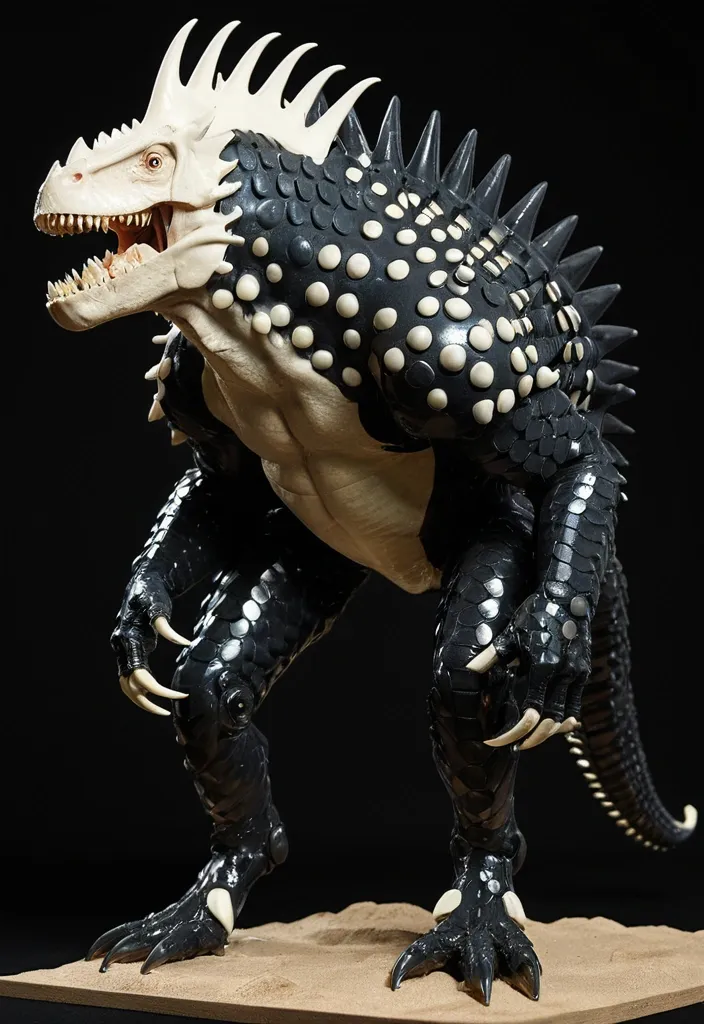
Physical Characteristics: Venenosus Regina is a titanic hybrid dinosaur standing approximately 20 feet tall at the shoulders and stretching 40 feet in length. Its frame is a powerful fusion of Tyrannosaurus rex and Giganotosaurus bulk , with a head shape that blends the robust cranial features of Giganotosaurus and the bony crown of Triceratops. The jawline is adorned with formidable bony spikes on each side , reminiscent of Triceratops horns , enhancing both offense and defense. Its body is armored with large , jet-black , glossy keratin scales inherited from Giant Pangolin DNA , interspersed with cream-colored underbelly patches. These scales are embedded with chromatophore cells from cuttlefish DNA , allowing Venenosus Regina to rapidly alter its skin color , texture , and pattern for camouflage or intimidation. The overall silhouette is muscular , lean and agile , with reduced hind legs that enable knuckle-walking , a trait borrowed from chimpanzee DNA , granting it a unique locomotion style that balances speed and stability.The forelimbs are robust and highly dexterous , equipped with slashing hook claws inspired by Saurophaganax and chimpanzee genetics , capable of delivering devastating swipes and manipulating tools or prey with precision. ,


